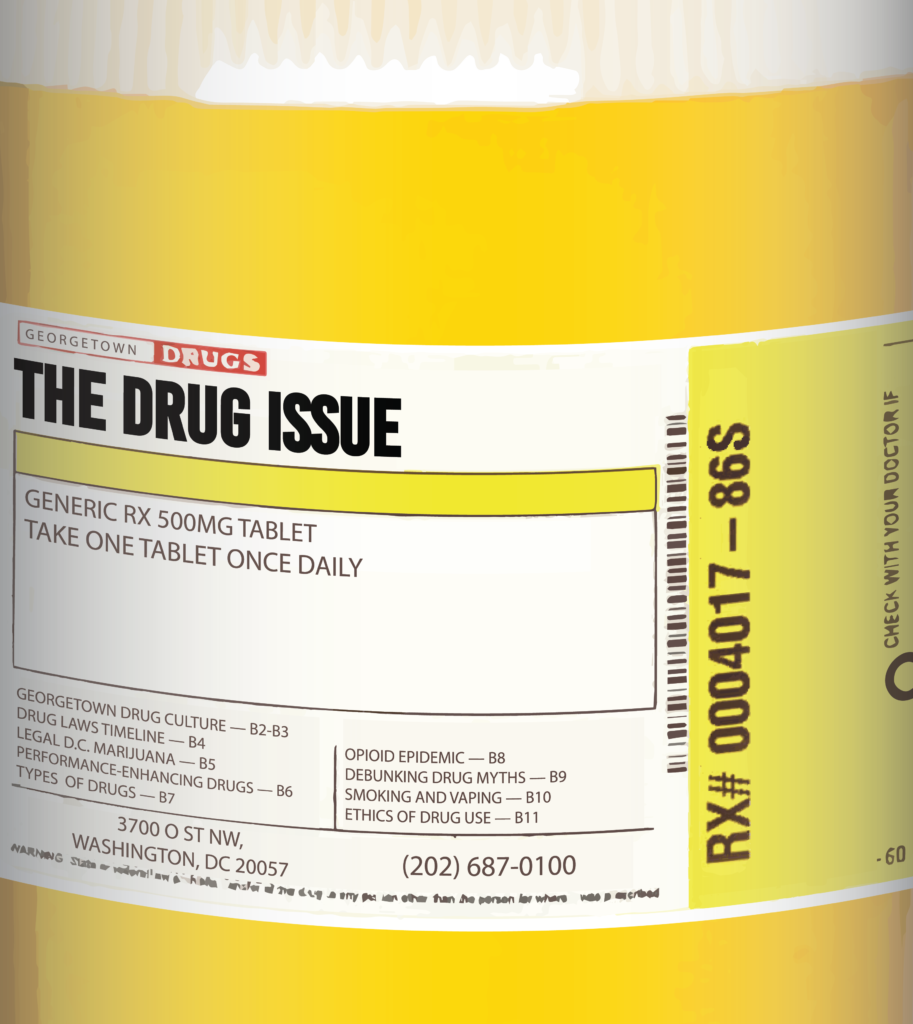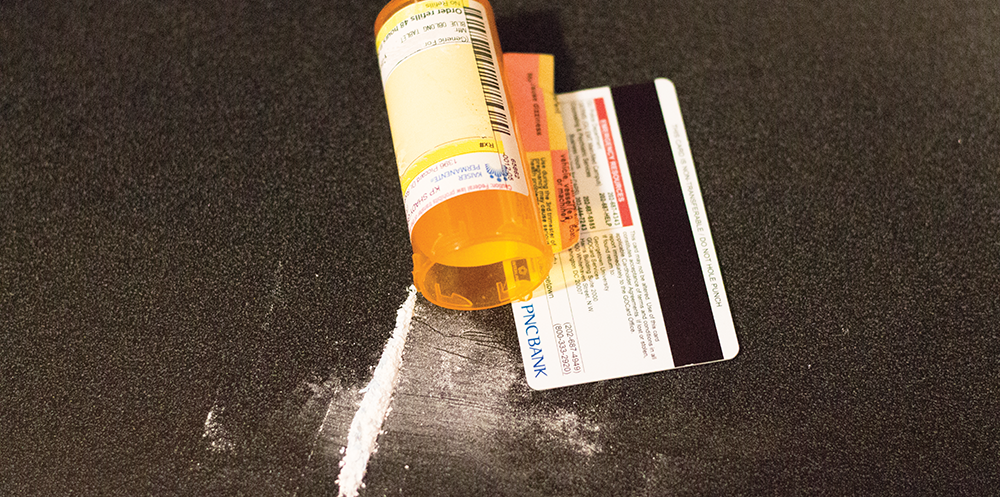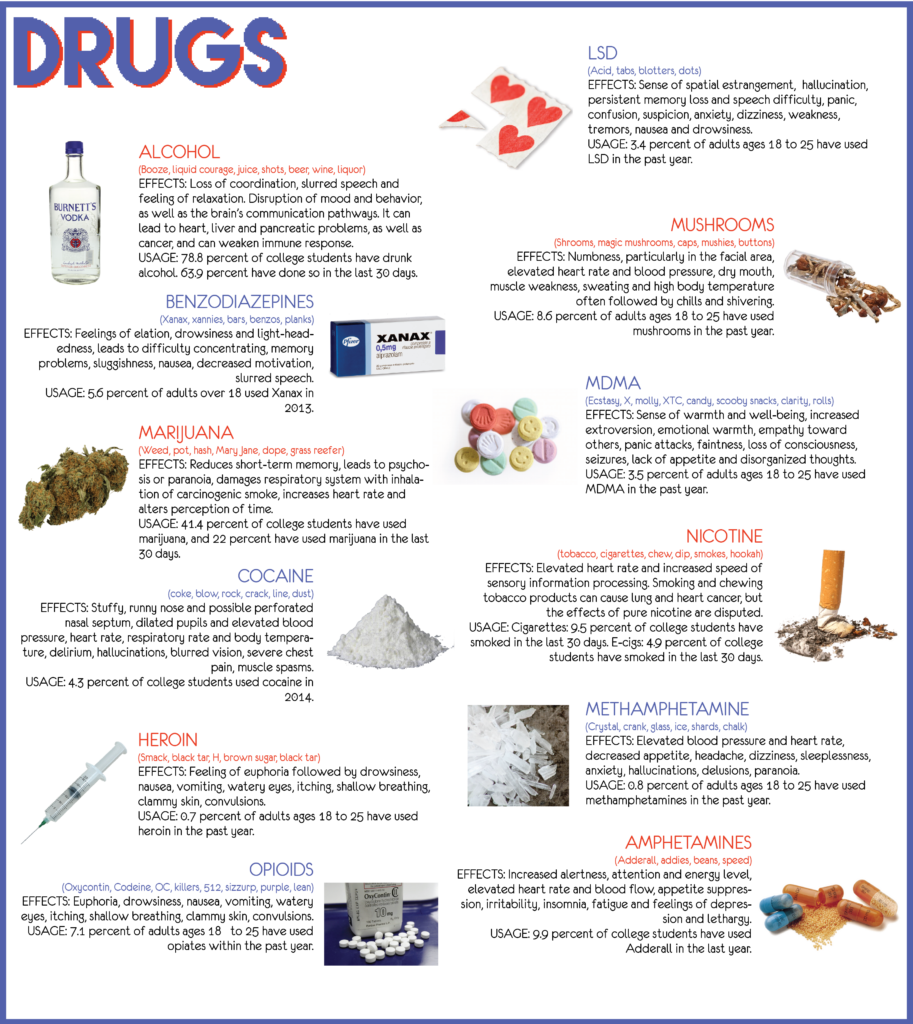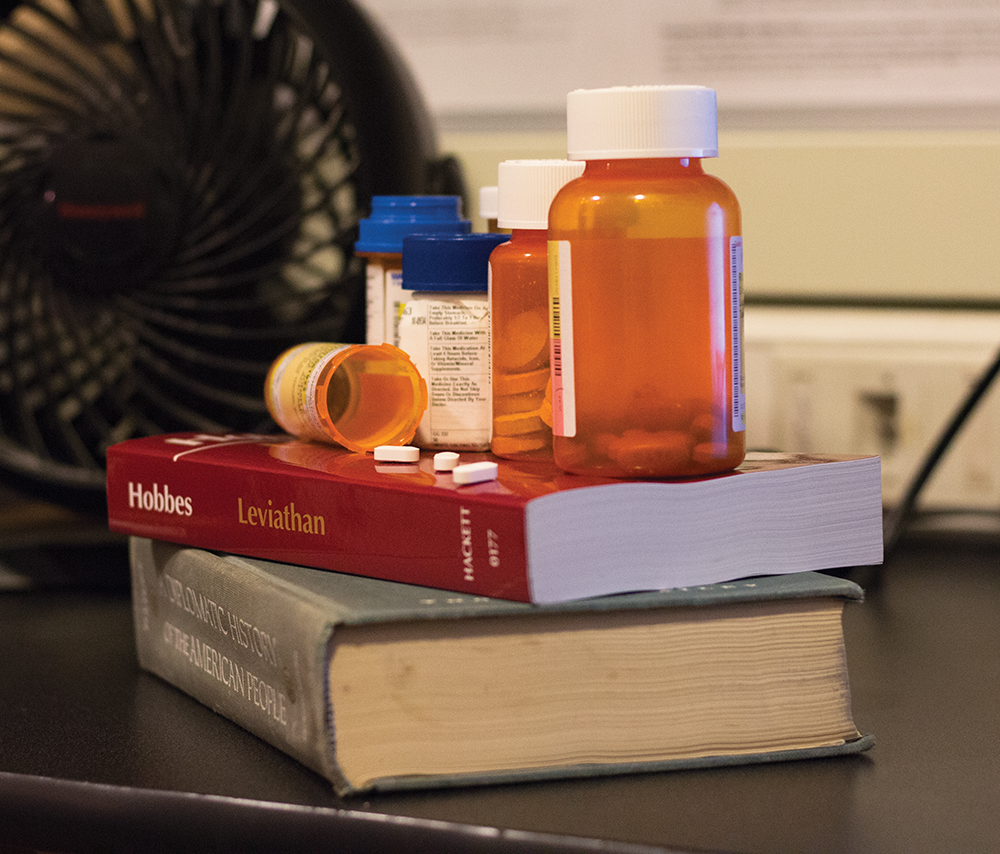
For college students and student-athletes across the country, mounting pressure to succeed appears to be linked to increased use of performance-enhancing drugs.
Performance-enhancing drugs are substances used to improve some aspect of an individual’s performance, either physical or cognitive. These enhancers include anabolic drugs, like steroids and hormones, as well as stimulants, painkillers, sedatives and gene doping.
Patrick Kilcarr, director of Health Education Services said anabolic drugs of these types are not necessarily considered performance enhancing unless misused.
“While an athlete that has low testosterone and is prescribed testosterone to achieve a normal level, this is not performance-enhancing.. It is medicinal. The same medication in the hands of someone who does not need it becomes a performance-enhancing drug,” Kilcarr wrote in an email to The Hoya.
This distinction applies to mental stimulants as well. “The same is true of Adderall. In the hands of someone with ADHD it is leveling the playing field,” Kilcarr wrote. “For someone who takes it without need, it becomes a performance-enhancing drug.”
According to Dr. Vince WinklerPrins, assistant vice president of student health, the most commonly used performance-enhancing drug on Georgetown University’s campus is caffeine. Other commonly used drugs include stimulants like Ritalin, Adderall and Dexedrine, which are commonly prescribed for attention deficit disorders.
Studies show that performance-enhancing drugs have numerous physical side effects, depending on the nature of the drug. Stimulants, for example, can raise blood pressure, increase risk of heart attack, stroke or aneurysm and disrupt regular sleeping patterns. Performance-enhancing drugs can also be addictive.
“The risk for developing dependence is high,” Italo Mocchetti, professor and vice chair of the department of neuroscience, wrote in an email to The Hoya.
Performance-enhancing drugs used to improve athletic performance can pose significant risks, especially given the intense physical nature of sports.
“Steroids are created for a very legitimate, important medical purpose. People sometimes forget that,” said Dave Tyahla, an adjunct faculty member in the Master’s in sports industry and management program in the School of Continuing Studies. “There is a ton of evidence that suggests that taking those without well-documented, monitored medical supervision can have a lot of danger to your system in the longer term.”
Luke Mohamed, also an adjunct faculty member in the sports industry and management program, cited concerns regarding the composition of performance-enhancing drugs, which can often contain multiple ingredients — some of which are permitted by government agencies or sports leagues, and others that are not.
Ultimately, the responsibility lies with the athlete to know what they are putting in their bodies.
“Many athletes engage in the use of these supplements thinking they are safe,” Shawn Hendi, associate athletics director, wrote in an email to The Hoya. “But the prevalence of performance-enhancing drugs in my experience is relatively low.”
Hendi has spent 25 years as a certified athletic trainer, with 23 of those years spent at NCAA Division I institutions.
Although Georgetown’s athletics program has a drug testing policy for student-athletes to reduce potential use of performance-enhancing drugs, drug use remains a concern.
“It can perpetuate well beyond highest level athletes,” Mohamed said. “Competing for a scholarship, that is a stressful situation, and when you are competing for that edge, unfortunately, performance-enhancing drugs can be one of those edges.”
Several other sources cited this potential link between stress culture and use of performance-enhancing drugs, including Kaitlyn Reynolds (COL ’21), social media coordinator for the Georgetown chapter of Active Minds, an organization dedicated to raising mental health awareness on college campuses.
“As it relates to athletics or academics, we do note that there are a lot of circumstances where kids are under pressure to perform to the best of their abilities,” Reynolds said.
Reynolds cited a study published by Active Minds chapters at Colgate University and the University of California, in which students observed a connection between mental health and drug use.
“Perfectionism is actually more crippling than helpful, and it is important to recognize that you are a human being and you have flaws. Are you going to make every basket in every game, are you going to get an A on every test? Absolutely not,” Reynolds said. “Recognize your resources, know who your support system is.”
Pete Bockelman, who teaches in the sports management program, including the class “Applied Ethics in Sports,” reflected on the often lesser-known side of the ethical debate on performance enhancing drugs in sports.
“There are really two sides of the argument. I have had students do a project saying that performance-enhancing drugs should be allowed for everyone because it levels the playing field,” Bockelman said. “It is one that you do not hear very often.”
But athletes and student-athletes are certainly not the only users of performance-enhancing drugs.
“Performance-enhancing drugs generally stay in the system a while, so the likelihood would be high that if a student-athlete was using some form of banned substance, they would be caught,” Kilcarr wrote. “Non-athletes can use performance-enhancing drugs without external risk of a problem.”
Ultimately, whether they are facing pressure to achieve athletically, academically or otherwise, college students may often find themselves surrounded by an intense stress culture. Recognizing the risks of performance-enhancing drugs can help prevent students from using them and falling into potentially dangerous patterns of abuse.
“Using performance-enhancing drugs can have a lasting deleterious impact on the person,” Kilcarr said. “Especially considering that as use continues, and growth continues unnaturally, the individual will begin to believe the only real way to make substantial gains is to use performance-enhancing drugs. This can create a destructive negative loop of use.”



















